Manufacturer: Sapphire
UK price (as reviewed): Approx. £510 (inc. VAT)
US price (as reviewed): MSRP $569 (exc. tax)
Finally. It’s taken a long time (too long), but custom, third-party Vega designs are finally starting to appear online and are coming in stock or at least up for pre-order. Given the current cryptomining craze, it’s hard to predict how pricing and availability will be affected in the coming months, but it’s good to have just something from AMD’s board partners to compete with custom Nvidia cards that are stocked in abundance. Vega’s launch was hardly successful, but even if you were tempted, the reference design left a lot of room for improvement. What follows is our first custom Vega review, but it won’t be our last. Launching today is the Sapphire Nitro+ version of both Vega parts; we’ve got the RX Vega 56 for review, which retails for a cool $569. UK pricing isn’t confirmed, but a simple conversion plus 20 percent for tax gives us around £510, which is steep given the short-lived launch price of just £399 for the reference card. This puts the RX Vega 56 Nitro+ OC in basic GTX 1080 territory, so it definitely has its work cut out for it.
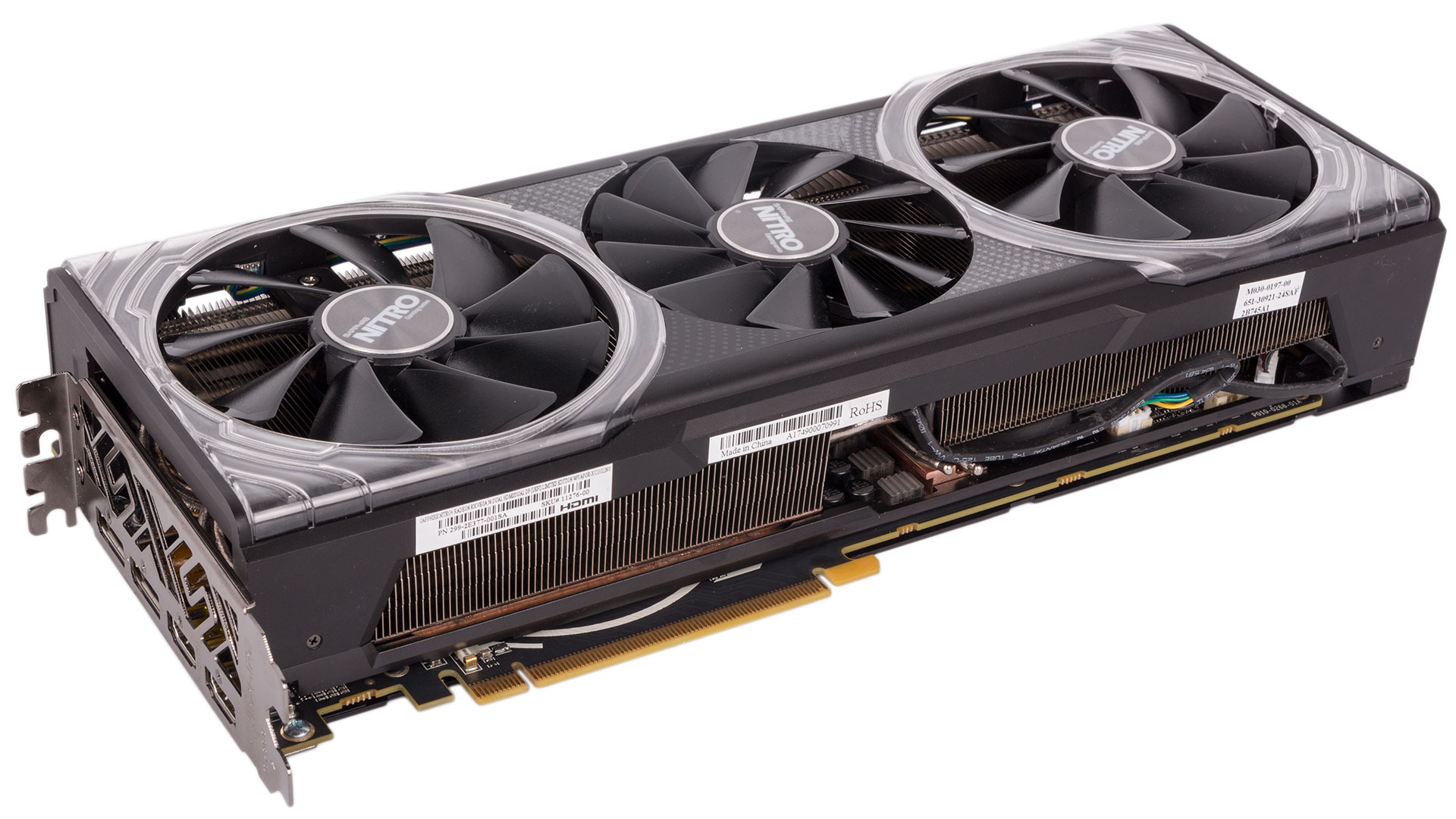
As you can see, this is a real monster of a card that not every case is going to accommodate. It’s 310mm long, 133mm tall, and thick enough to occupy three whole PCIe slots. It tips the scales at just over 1.6kg, which is insane. It actually comes with a metal support bracket, and that’s a good thing, as this sort of weight will definitely put strain on motherboards long-term, even those with reinforced PCIe slots. This card has the sort of dimensions you get with flagship GTX 1080 Ti cards, so it’s not unheard of, but you will need to make sure you have space for it, and we recommend using the bracket too. The bracket simply screws in to the normal mounting holes on the outside of the card, supporting it with a piece of rubber that can be repositioned along its length.

The RX Vega 56 Nitro+ is overclocked at the factory to a boost speed that, at 1,572MHz, is 101MHz (about seven percent) faster than the reference speed of 1,471MHz. This is the so-called ‘Nitro Boost’ speed which is set by the default BIOS switch position. Flick it towards the display outputs, however, and you enter Efficiency Mode, where the boost clock reverts to the reference speed. Within both modes, you can also use the usual AMD WattMan profiles (Power Save, Balanced (default), and Turbo Mode), meaning there are six different settings possible – the same as the reference cards. In both BIOS switch positions and across all WattMan profiles, the 8GB of HBM2 memory remains clocked at the reference speed of 800MHz; it’s a shame not to see a small bump here from Sapphire.
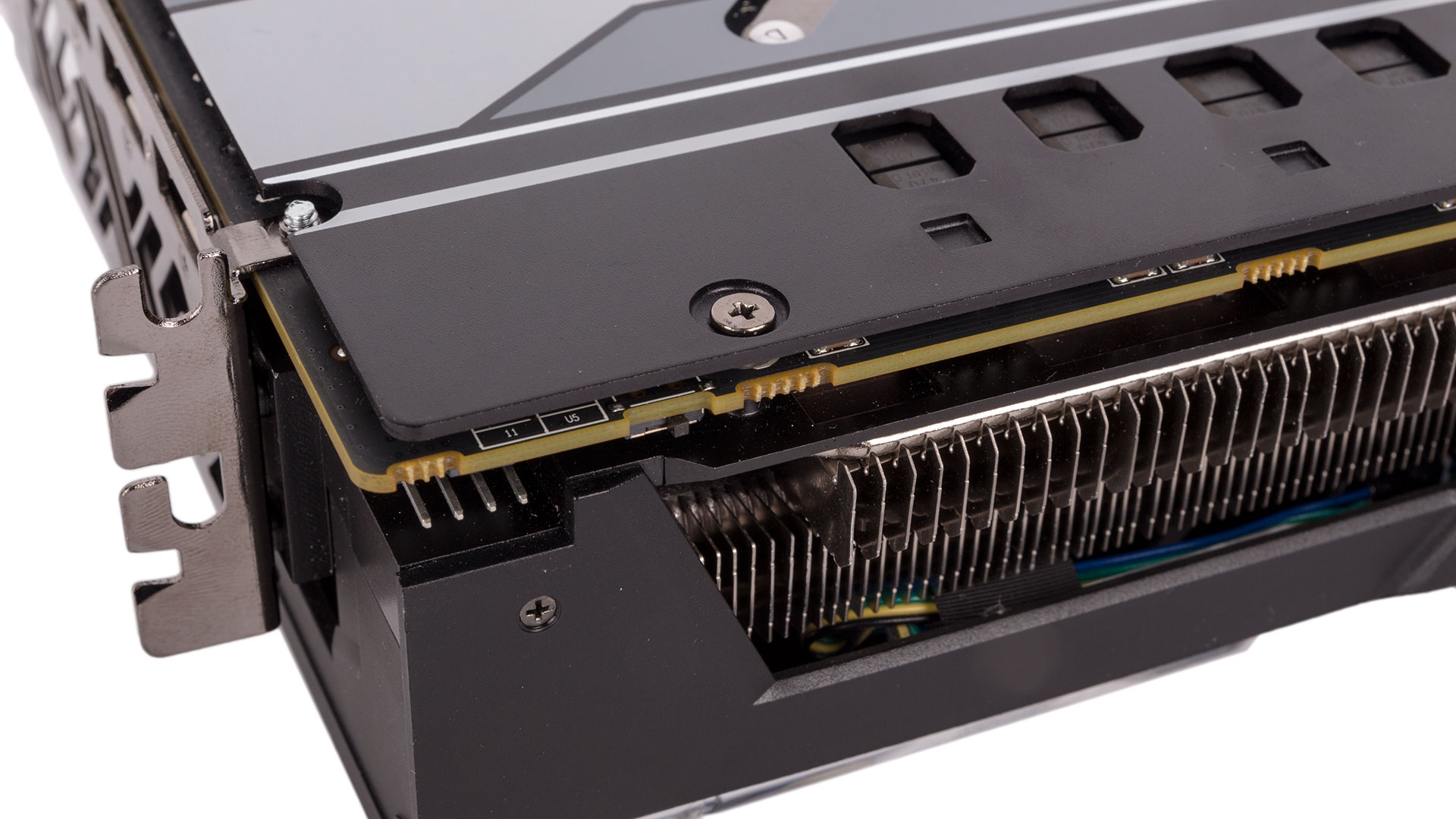
You might have noticed a four-pin fan header next to the BIOS switch, and this is part of Sapphire’s Turbine-X feature. A second header is found on the right side. Sapphire appears to have taken a leaf out of Asus’ book here, where the feature is called FanConnect II. Essentially, it allows you to connect up to two PWM-enabled system fans and have their speeds dynamically controlled based the graphics card’s temperature readings, which are taken from five temperature sensors located around the PCB. You cannot manually control them like you can with Asus, however.
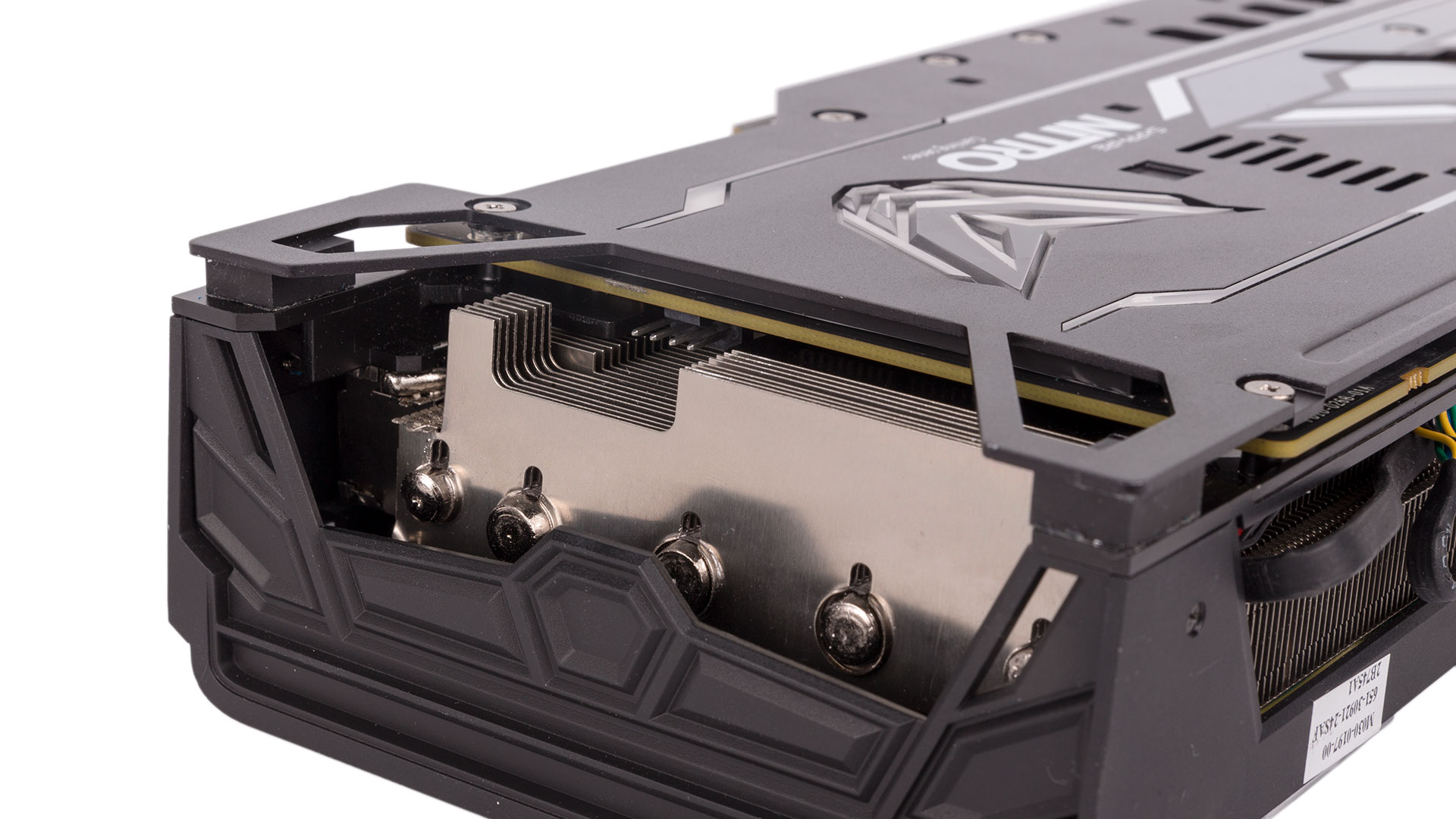
The RX Vega 56 is more than capable of powering VR headsets comfortably, so the decision to swap one DisplayPort for a HDMI port so that there are two of each is a good one – it allows VR users to have a headset and a HDMI-based display always connected without having to swap the cables in and out.
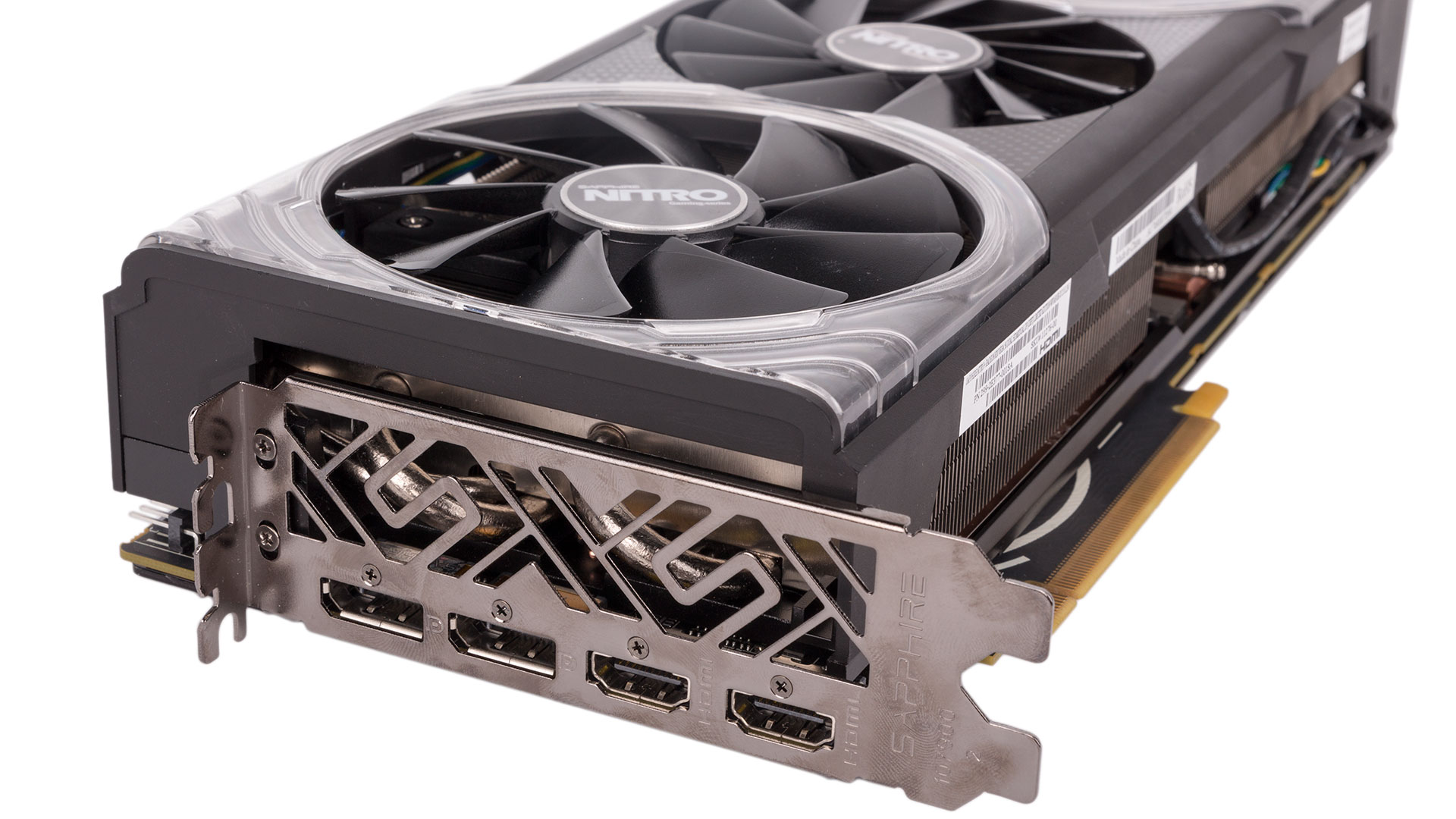
The RX Vega 56 Nitro+ accepts a whopping three eight-pin PCIe connectors and needs all three to be connected to work – it reminds us of over-the-top dual-GPU cards. This may be a limitation depending on your PSU, which is unfortunate for Sapphire; it’s a shame it wasn’t able to stick with a dual eight-pin design. Technically, there is 525W available to the card; we can’t imagine anyone ever needing that much, but you never know.
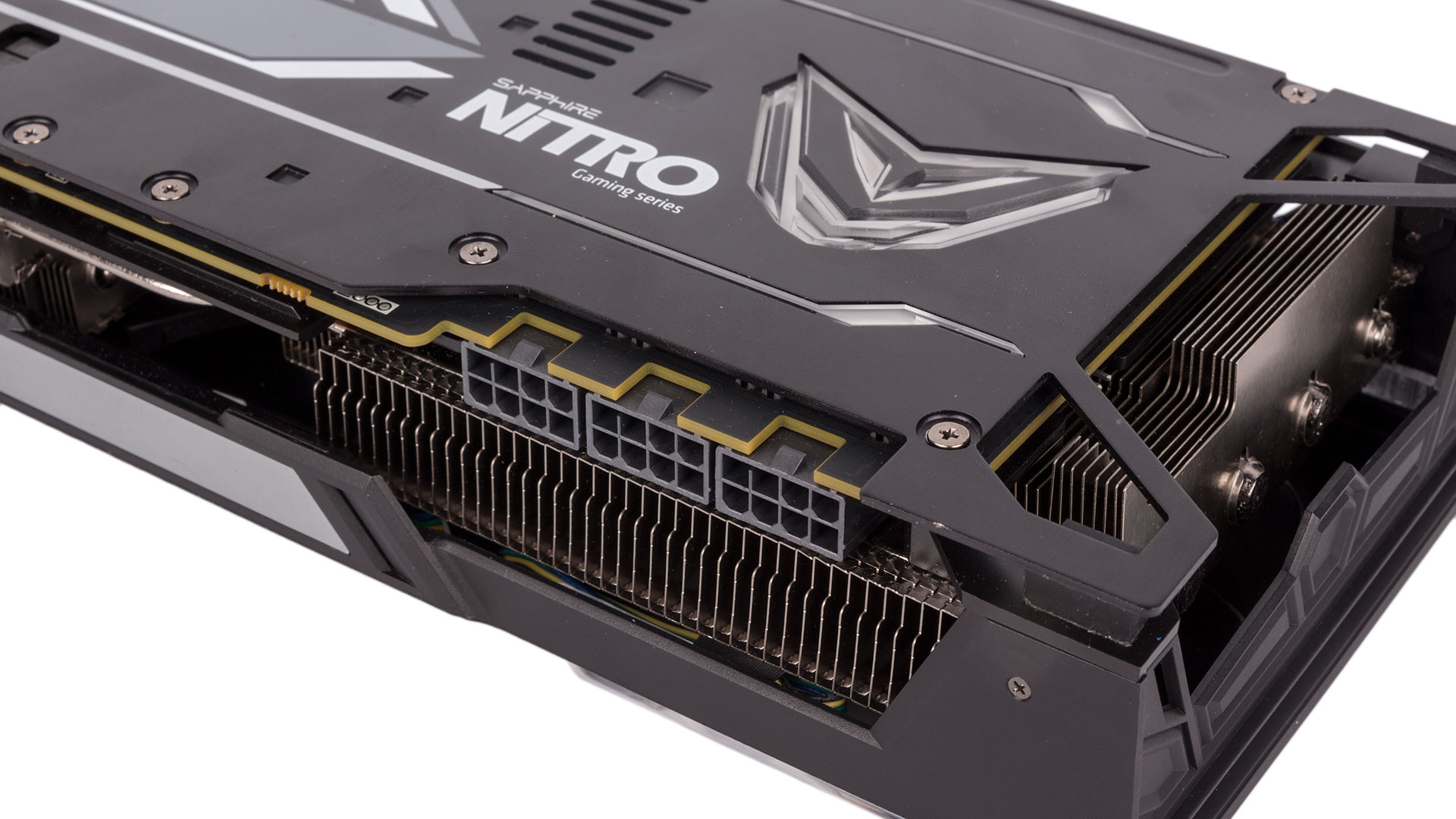
The card is kitted out with a serious amount of RGB lighting. Both side fans are ringed by lighting, and this also illuminates the logo along the top. Sapphire hasn’t stopped there, however, as the backplate logos also get the RGB treatment. The card is positively glowing when plugged in, and Sapphire has developed a simple application for controlling the lighting. You cannot control the zones independently, but you do have the option to dim the brightness or turn it off, choose any colour you like, and set the lighting to respond to PCB temperature or fan speed. It could be a bit more complex, and it doesn’t support synchronisation with motherboard programs, but we’re happy that the whole card is RGB rather than just one or two segments – if you’re going to do it, do it properly.
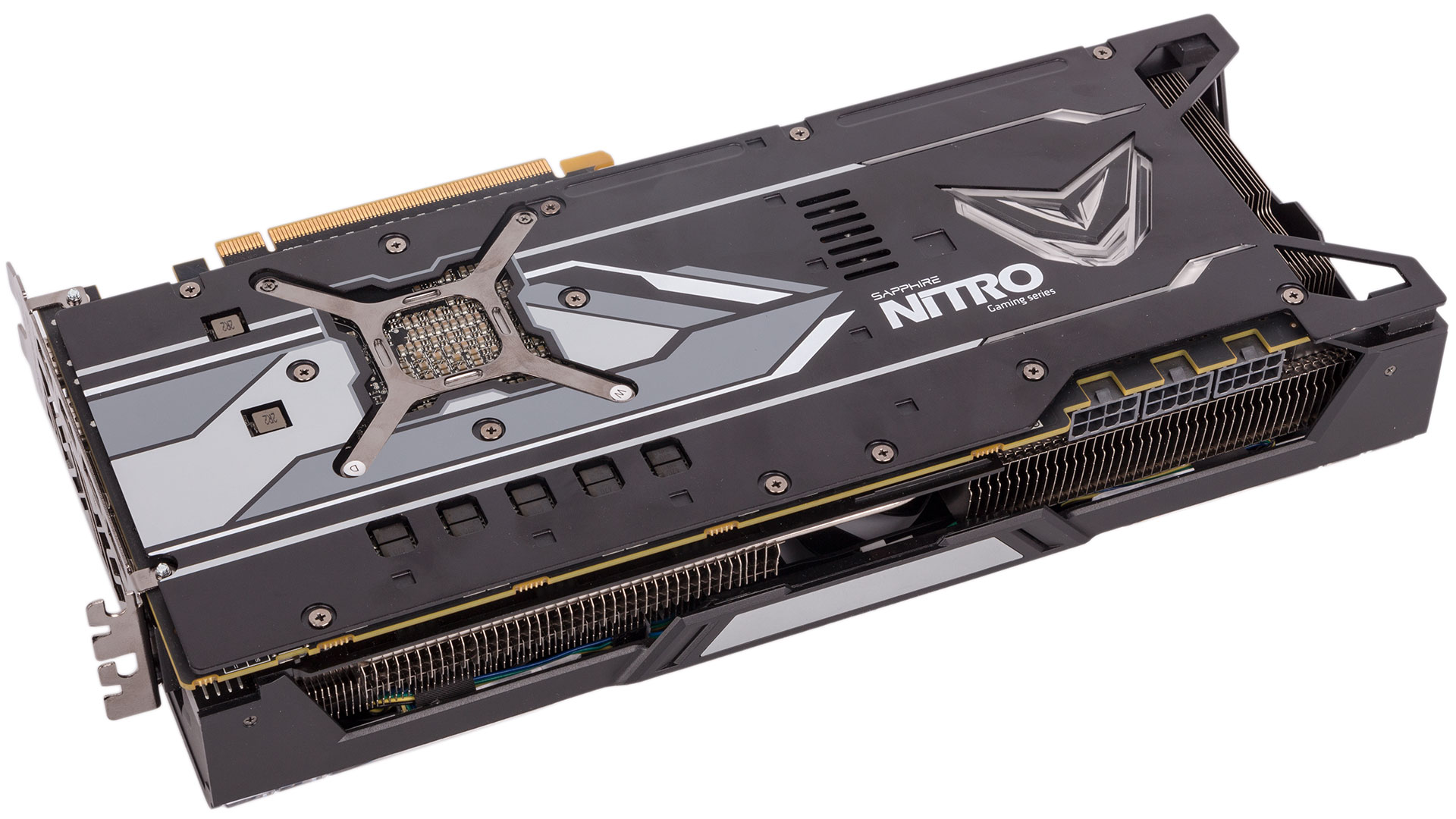
With these new Nitro+ models, Sapphire offers what it calls its ‘most efficient cooling to date’. Cooling the massive heatspreader that sits atop the GPU and HBM2 memory dies is a copper vapour chamber – first used by Sapphire in its Vapor-X cards – that transfers heat to the two separate fin stacks via six heat pipes (three 6mm, three 8mm). The vapour chamber and heatsink are also connected to other critical components by a large metal contact plate and thermal padding, and even the backplate gets involved with a bit more thermal padding on the back of the MOSFET areas.
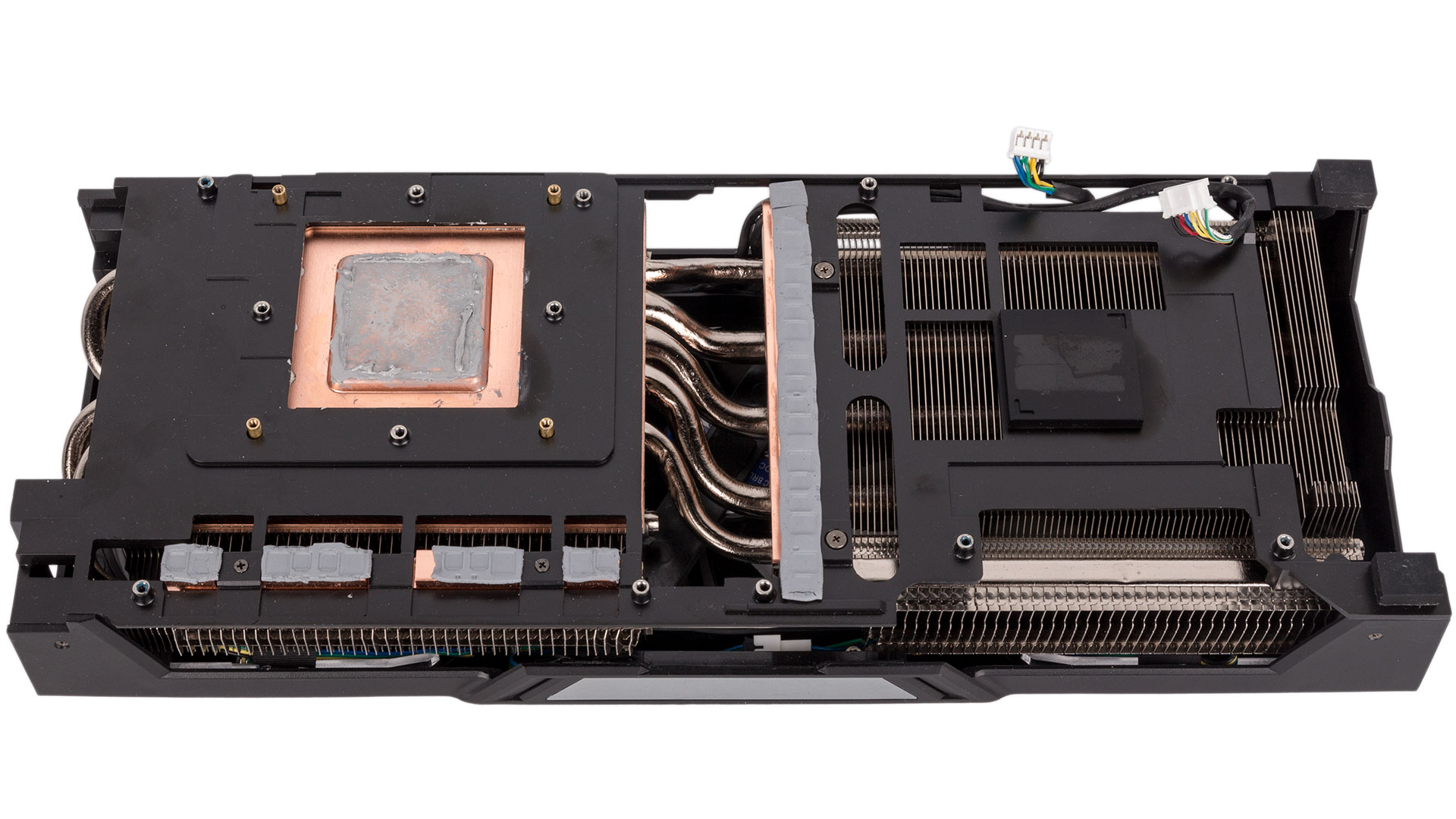
Cooling everything down is a trio of fans, hence the length of the card. The outer two are 92mm in diameter and spin anticlockwise, while the 80mm middle fan spins clockwise, achieving what Sapphire calls ‘optimal airflow’. All three fans sport dual ball bearings and use Sapphire’s Quick Connect 2 system which means they can be easily removed and replaced in the event of a failure. Precision fan control is a feature that Sapphire says keeps RPM variance down to three percent instead of the industry standard 10 percent, which should help to eliminate noise that stems from fans spinning at different speeds. Finally, the RX Vega 56 Nitro+ is semi-passive, so all three fans will remain off until the GPU reaches 55°C, and they’ll turn off again when it comes back down to 50°C.
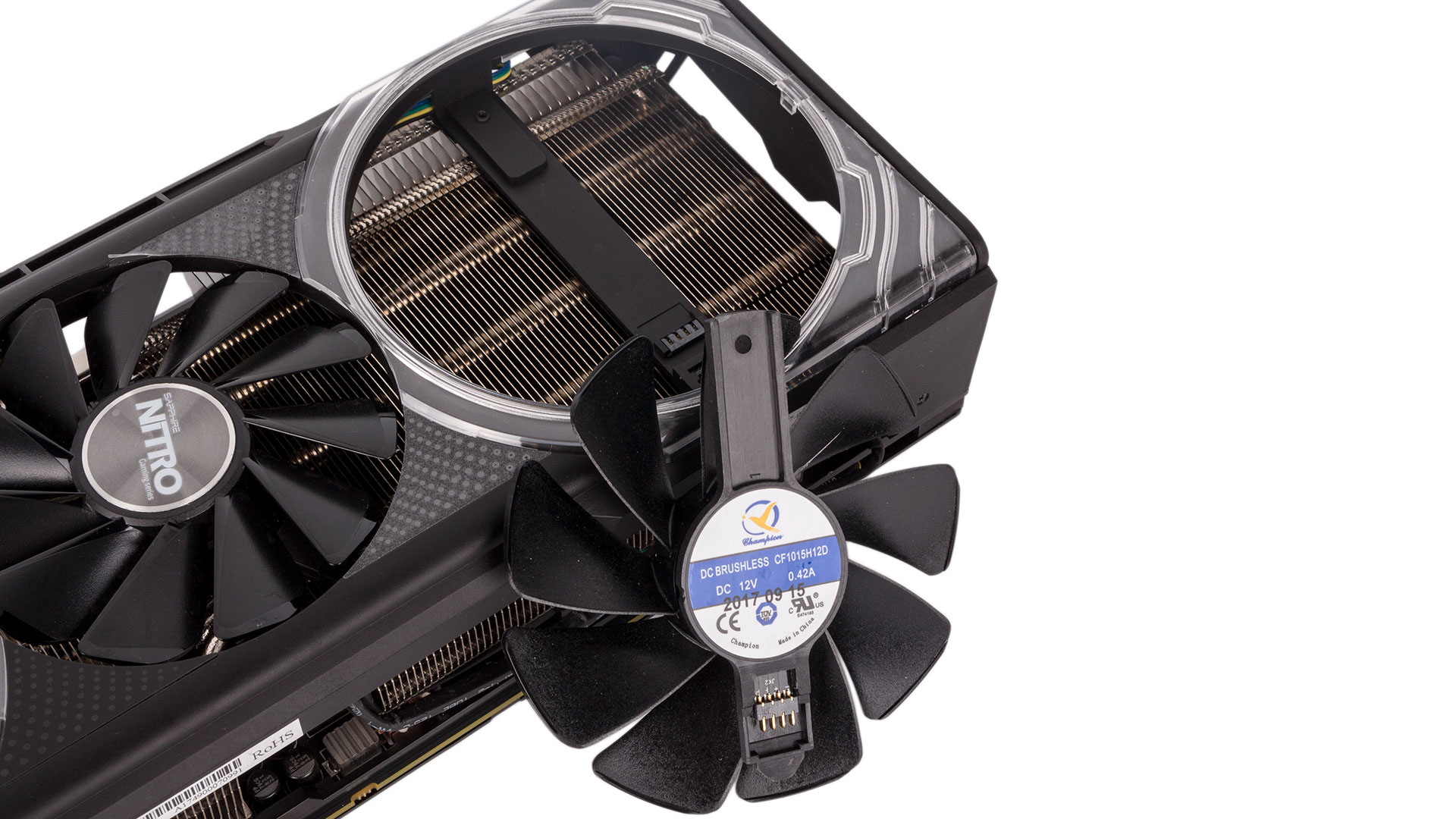
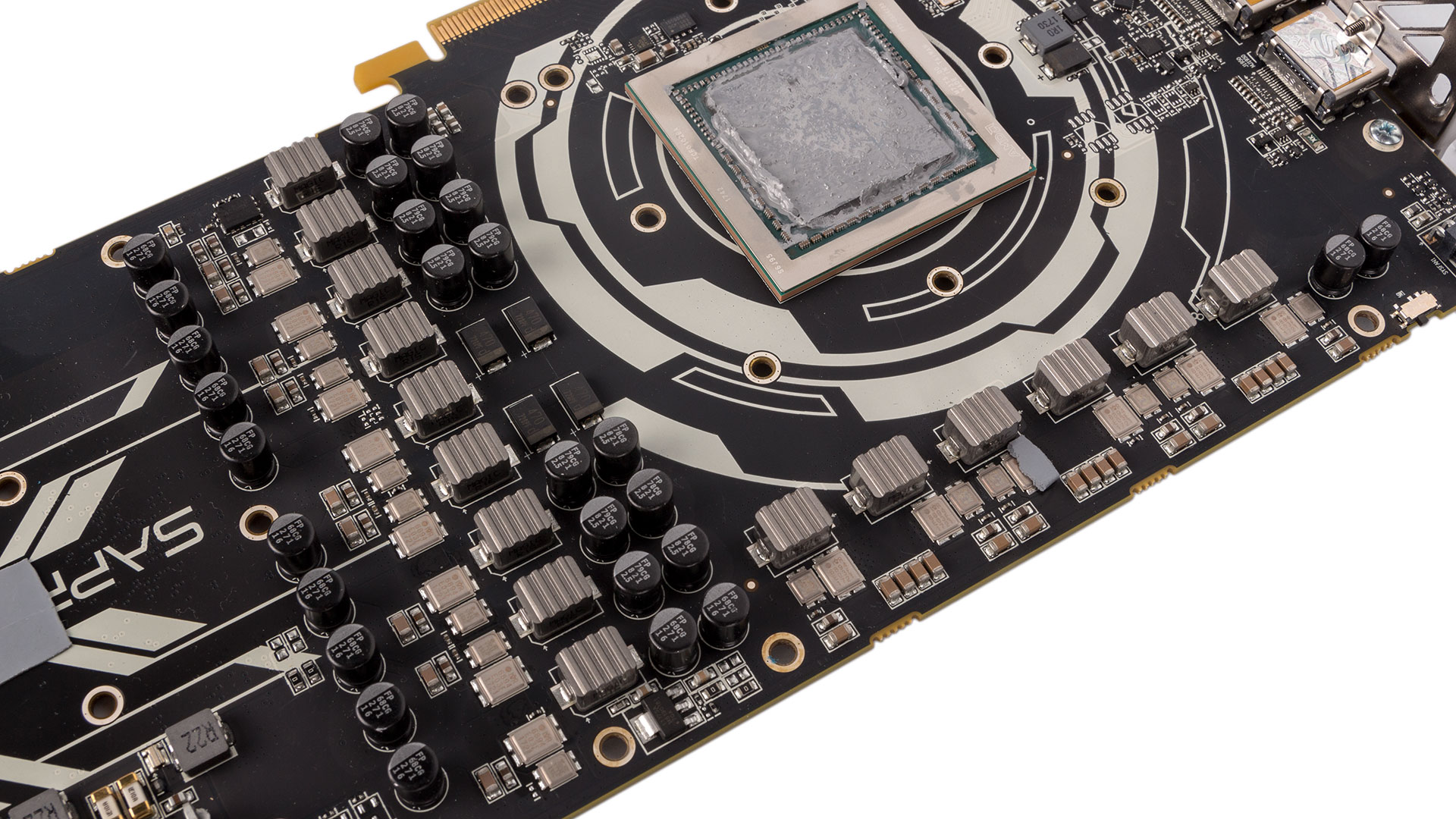
The fully custom PCB seems very well made, and Sapphire has clearly put some effort into it. The GPU is fed by a massive 14 phase power delivery system that’s digitally controlled. Sapphire also implements its Black Diamond chokes, which it claims run 10 percent cooler and 25 percent more efficiently than regular models. It also claims a 15 percent reduction in operating temperature for these chokes compared to its own previous-generation ones.
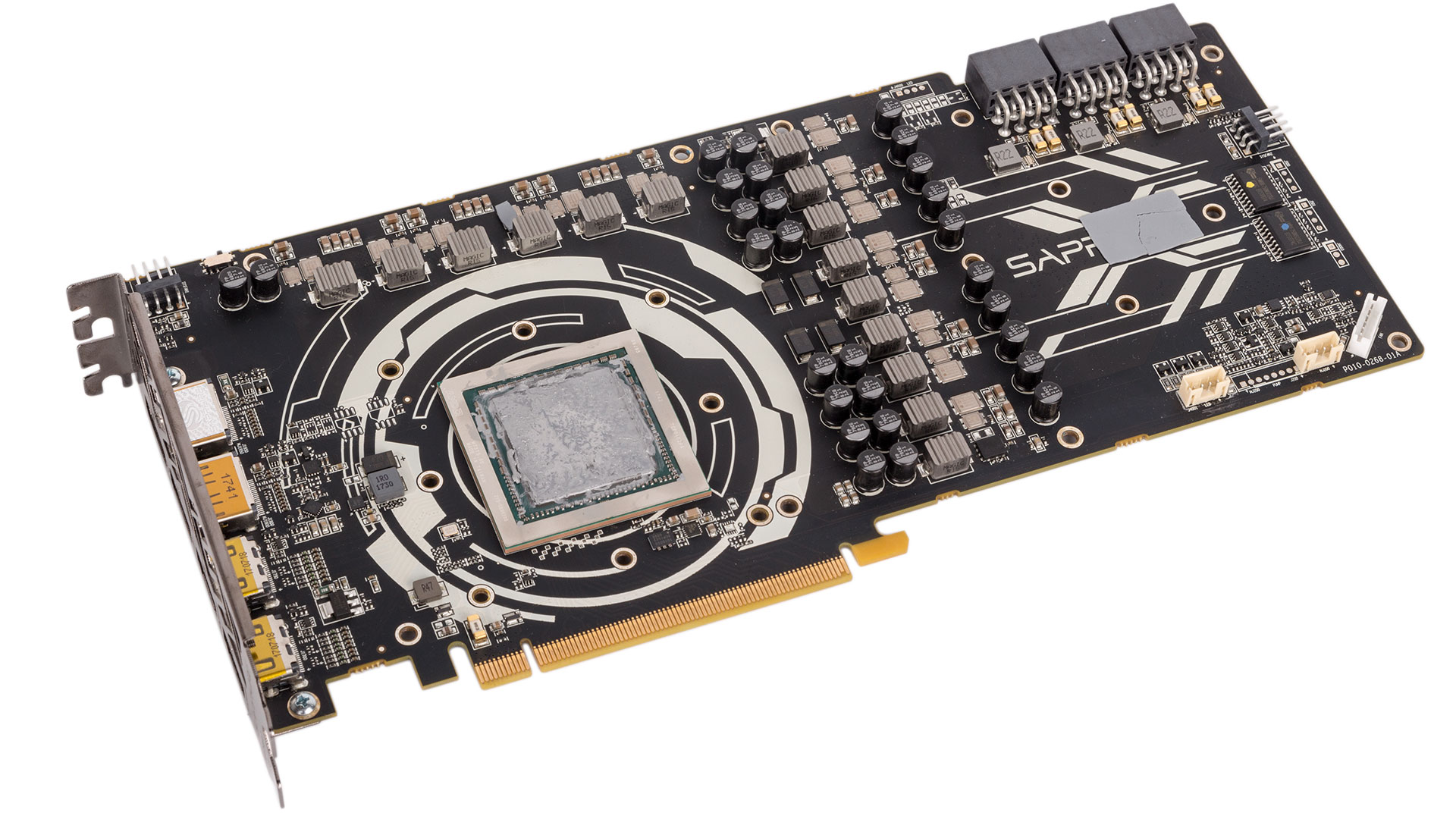
Specifications
- Graphics processor AMD Radeon RX Vega 56, 1,305MHz (1,572MHz boost) (1,176MHz/1,471MHz with Efficiency BIOS)
- Pipeline 3,584 stream processors, 256 texture units, 64 ROPs
- Memory 8GB HBM2, 1.6Gbps effective
- Bandwidth 409.6GB/sec, 2,048-bit interface
- Compatibility DirectX 12, Vulkan, OpenGL 4.5
- Outputs 2 x DisplayPort 1.4, 2 x HDMI 2.0b
- Power connections 3 x eight-pin PCIe, top-mounted
- Size 310mm long, 133mm tall, triple-slot
- Warranty Two years

MSI MPG Velox 100R Chassis Review
October 14 2021 | 15:04

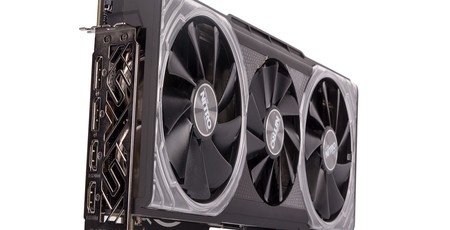
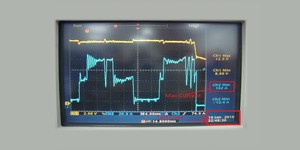
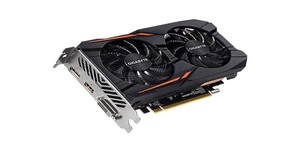
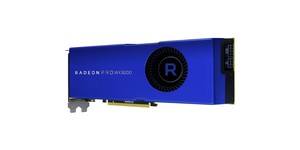




Want to comment? Please log in.